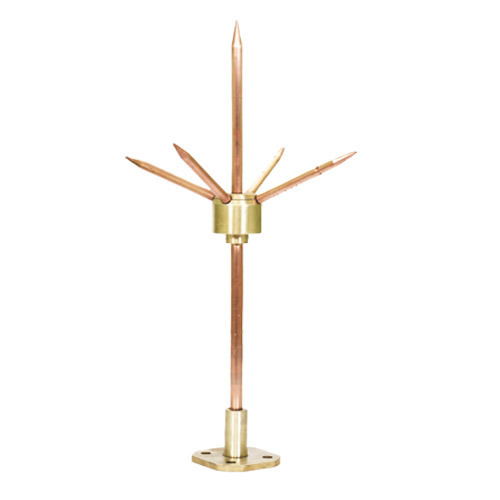Earthing
Traditional Earthing
It is done with the use of charcoal and salt and GI Pipe. It typically requires more space and more maintenance than the newer method of chemical earthing. There is also high fluctuation in Ohmic value in this type of earthing.

GI Plate

GI Strip

GI Wire

Copper Plate

Copper Strip

Copper Wire

GI Earthing Pipe

Cast Iron Pit Cover
Chemical Earthing
It is done using metal electrode which goes into the ground near the building. It helps in the efficient discharge of all the fault currents/ surge currents present in the electrical system. It also helps in dissipating the high voltages which are passed on through the lightning arrestors atop buildings.
Also, use of Backfill compoundswhich are earth enhancement compounds that have different properties depending on soil and other atmospheric conditions. Essentially, an ideal BFC has high electrical conductivity, moisture capture and retention abilities and anti-corrosive properties. It works in tandem with the Safe Earthing Electrode. Together both form the efficient earthing system.

Earthing Chemical

GI Electrode

Copper Bonded Electrode

Pure Copper Electrode

Copper Grounding Rod

Copper Bonded Rod

Coupling for Earth Rod with Thread

Impact Head for Earth Rod with Thread

Air Termination Rod

Plastic Pit Cover

Earthing Kit

Plastic Earth Chamber

DC Clip

Connection Clamp

Connection Clip

Connection and Expansion Strip

Connection Terminal for Round Cable

Cross Connectors

Universal Connection Clip for Earth Rods
Lighting Arrestor
Metallic device mounted at the highest point of the building to capture lightning strikes and direct it to the earth via a safe path thereby preventing it from flowing through the building’s electrical circuit. In the absence of the lightning arrester a lightning strike could destroy electrical equipment and cause harm to human life through electrocutions.



